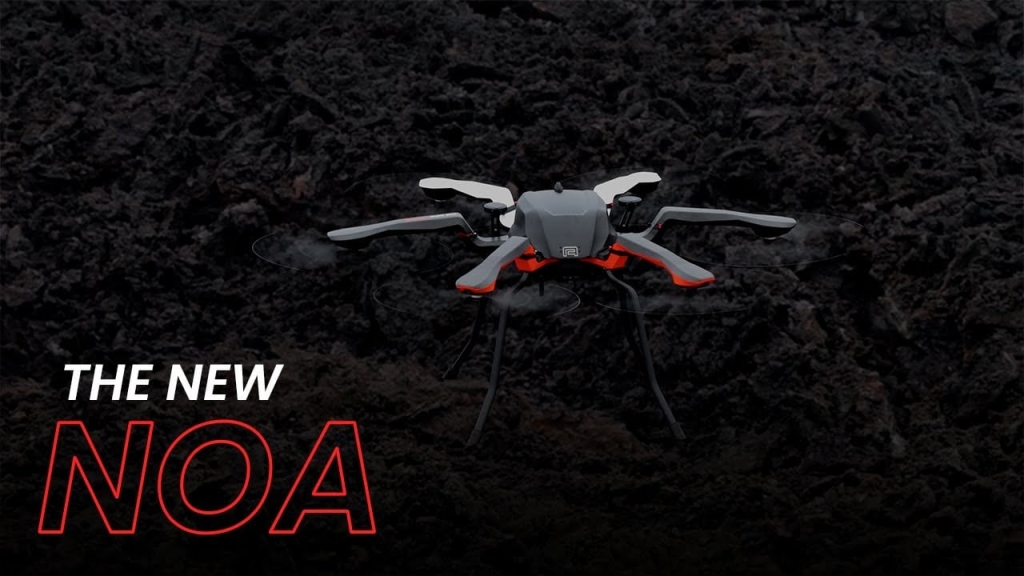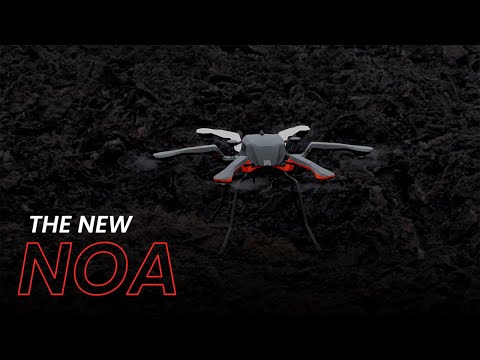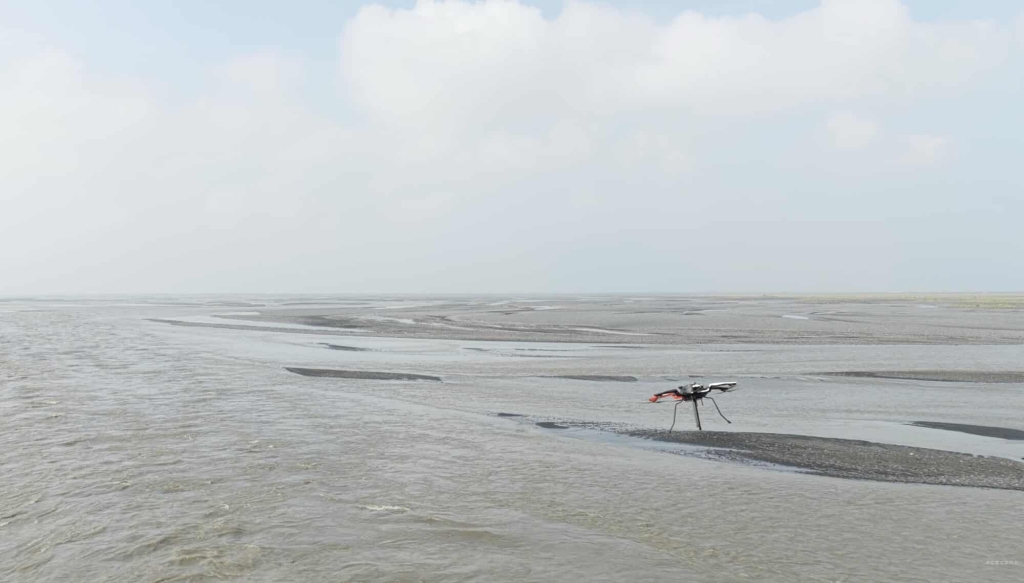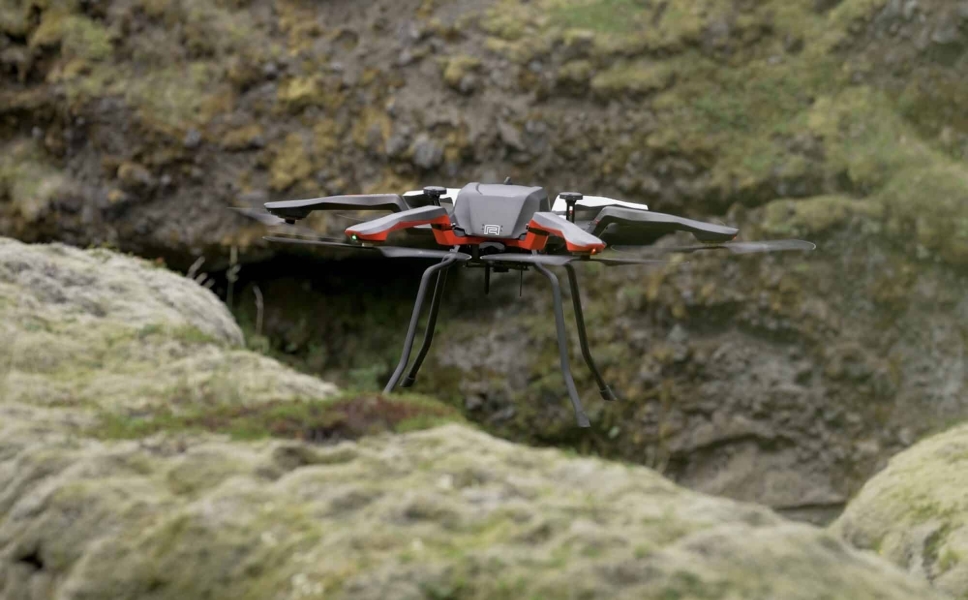Dutch Acecore Unveils Next-Gen Noa Heavy-Lift Drone With 80-Minute Flight Time

Dutch drone manufacturer Acecore Technologies has launched the next generation of its flagship Noa heavy-lift hexacopter, bringing significant upgrades to deployment speed and flight efficiency while maintaining the 20kg (44-lb) payload capacity that made the original a workhorse for professional operators.
The redesigned Noa addresses a critical pain point for field operators: setup time. The new Noa features a completely redesigned folding mechanism that enables faster deployment and transport, paired with a redundant boom locking system for enhanced safety during operations.

Extended Flight Performance and Redesigned Airframe
Flight time jumps to 80 minutes in the new generation—a 33% increase over the original 2020 model’s 60-minute endurance. This extended airtime translates directly to more ground coverage for surveying teams and inspection crews operating in remote locations.
The hexacopter’s carbon fiber body has been completely redesigned, with the centerpiece and folding mechanism now manufactured from a single solid piece of carbon fiber. This reduces part count while increasing structural rigidity—a design choice that benefits operators hauling expensive LiDAR systems or cinema cameras worth tens of thousands of dollars.
The complete system ships in a single transport case measuring 84x88x50cm (33x35x20 inches), maintaining the Noa’s toolless setup that professional crews need when operating under time pressure.
Proven Heavy-Lift Platform Gets Smarter Connections
The six-motor redundant configuration remains unchanged, providing the fail-safe reliability that allows the Noa to safely land even with a motor failure. Acecore added a dedicated payload interface panel on the side of the airframe with LEMO, XT30, PWM, and telemetry connectors, simplifying the integration of sensors, cameras, and accessories.
This modular approach lets operators swap between applications—cinema rigs one day, LiDAR surveying the next, thermal inspection after that—without extensive reconfiguration. The Noa carries payloads up to 20kg (44 lbs), accommodating everything from RED cinema cameras with gimbals to specialized sensors like the RIEGL VUX-1UAV LiDAR scanner or the V2Mag mine detection system.
Weather resistance specs remain robust: operations possible in temperatures from -15°C to 50°C (-5°F to 122°F), winds up to 29 knots (55 km/h), and rainfall up to 10mm per hour. The maximum takeoff weight sits at 36.8kg (81.2 lbs).

Real-World Missions From Ukraine to Iceland
The Noa platform has proven itself in demanding real-world applications. Acecore’s drones are currently deployed in Ukraine for magnetic mine detection operations, carrying the V2Mag sensor that delivers centimeter-level accuracy with a world-record low noise level of 0.01 nT.
Earlier this year, the Royal Netherlands Army selected Acecore’s Zoe M4 quadcopters for bridge assessments and troop movement planning. The company’s platforms have also tackled extreme environment missions, including mapping underground magma flows in Grindavik, Iceland, following volcanic eruptions that destroyed homes and forced evacuations.
King Willem-Alexander of the Netherlands personally piloted an Acecore Noa during a military showcase demonstrating Dutch UAV support for Ukraine’s mine detection and clearance operations.

Pricing and Market Position
The next-generation Noa starts at €30,900 ($32,850 USD), positioning it in the premium professional segment alongside platforms like the DJI Matrice series, FreeFly Alta systems, and the Inspired Flight IF1200. That price reflects the hand-crafted construction at Acecore’s Netherlands headquarters, where the company manufactures all drones from locally sourced materials.
Acecore supports diverse payload integrations off-the-shelf, including systems from Phase One Industrial, Gremsy, RIEGL, YellowScan, and others. The platform is NDAA-compliant, meeting requirements for U.S. government and military contracts.
Target applications span land surveying, 2D and 3D LiDAR mapping, wind turbine and powerline inspection, cinema production, search and rescue, and military intelligence gathering.
DroneXL’s Take
We covered the original Noa launch back in May 2020, and this redesign shows Acecore listened to what operators actually need in the field. The jump from 60 to 80 minutes of flight time is huge—that’s potentially fitting an entire additional survey flight into a work day, or getting the shot without worrying about battery anxiety on a remote cinema location.
What stands out is the focus on practical improvements rather than headline-grabbing specs. The single-piece carbon fiber body construction and new folding mechanism might not sound sexy, but anyone who’s set up a heavy-lift hexacopter in challenging field conditions knows these details matter enormously. Faster setup means more flights per day. Better structural rigidity means your $50,000 LiDAR payload stays more stable.
The dedicated payload interface panel is another smart move that shows real-world thinking. Professional operators often run multiple mission types with the same airframe, and anything that speeds up sensor swaps translates to better economics.
At $32,850, the Noa isn’t cheap, but it’s targeting serious professional and government operators who need European-made, NDAA-compliant hardware that can operate in genuinely harsh conditions. The platform’s deployment in Ukraine for mine detection and selection by the Dutch military suggests the ruggedness claims aren’t marketing fluff.
The heavy-lift drone market is heating up, with the hexacopter segment projected to grow at 16.8% annually through 2035. Acecore’s betting that professional operators will pay premium prices for Dutch craftsmanship, proven field reliability, and support infrastructure. Based on the company’s track record with challenging missions from Iceland volcanoes to Ukrainian minefields, that bet seems reasonable.
What do you think? Share your thoughts in the comments below.
